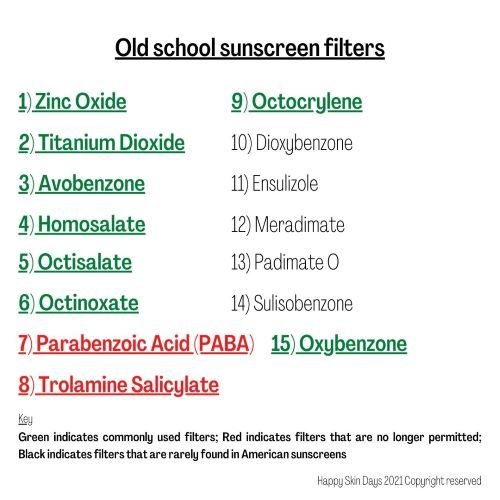At the outset, its important to stress two things:
First, its not just sunscreens, but it is many compounds that you find in normal products/foods etc. It is illusory for you to want to protect coral reefs, but continue to apply body lotions that contain parabens and Oxybenzone. Therefore, much depends on your attitude to risk. Do you want to protect coral reefs at all costs or are (e.g.) happy doing your bit by avoiding some products
This choice is 100% personal because most countries do not ban (e.g.) parabens or oxybenzone
Second, most of the research performed on sunscreen filters relates to “old school” filters that are ubiquitous in the USA but increasingly are redundant in the rest of the world.
The EU is better equipped to deal with the threat to coral reefs because its sunscreen regulation is more than recent the archaic 1970s rules of the USA. The EU has newer style filters!!
Old school filters
The USA have 16 filters and of these, 2 are no longer permitted in sunscreens (PABA and Trolamine Salicylate), and my own data shows that the most common ingredients used in American sunscreens number about 8 filters.

Controversial sunscreen filters are:
- Avobenzone
- Octinoxate
- Octocrylene
- Oxybenzone
This is a surprisingly short list and it is these filters that sunscreens contain that harm coral reef, by doing all or some of these:
- Inducing coral bleaching, which essentially is caused by rising temperatures
- Damaging coral DNA
- Inducing endocrine disruption
- Coral reef deformity
- Metabolic toxicant in corals (Octocrylene)
This list is not exhaustive. You can read more at the Haerticus Lab website
New school filters
No one has suggested yet that new style filters cause concern – which is unsurprising because the molecular weight of new style filters is LARGE and at the same time, they are not prone to breakdown as old-school filters are. These include:

That’s
See also
